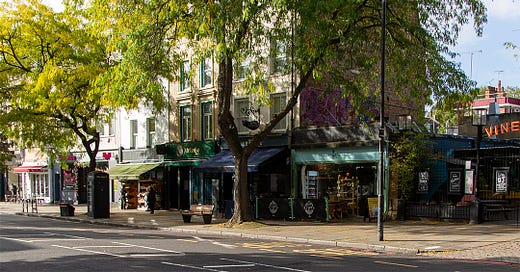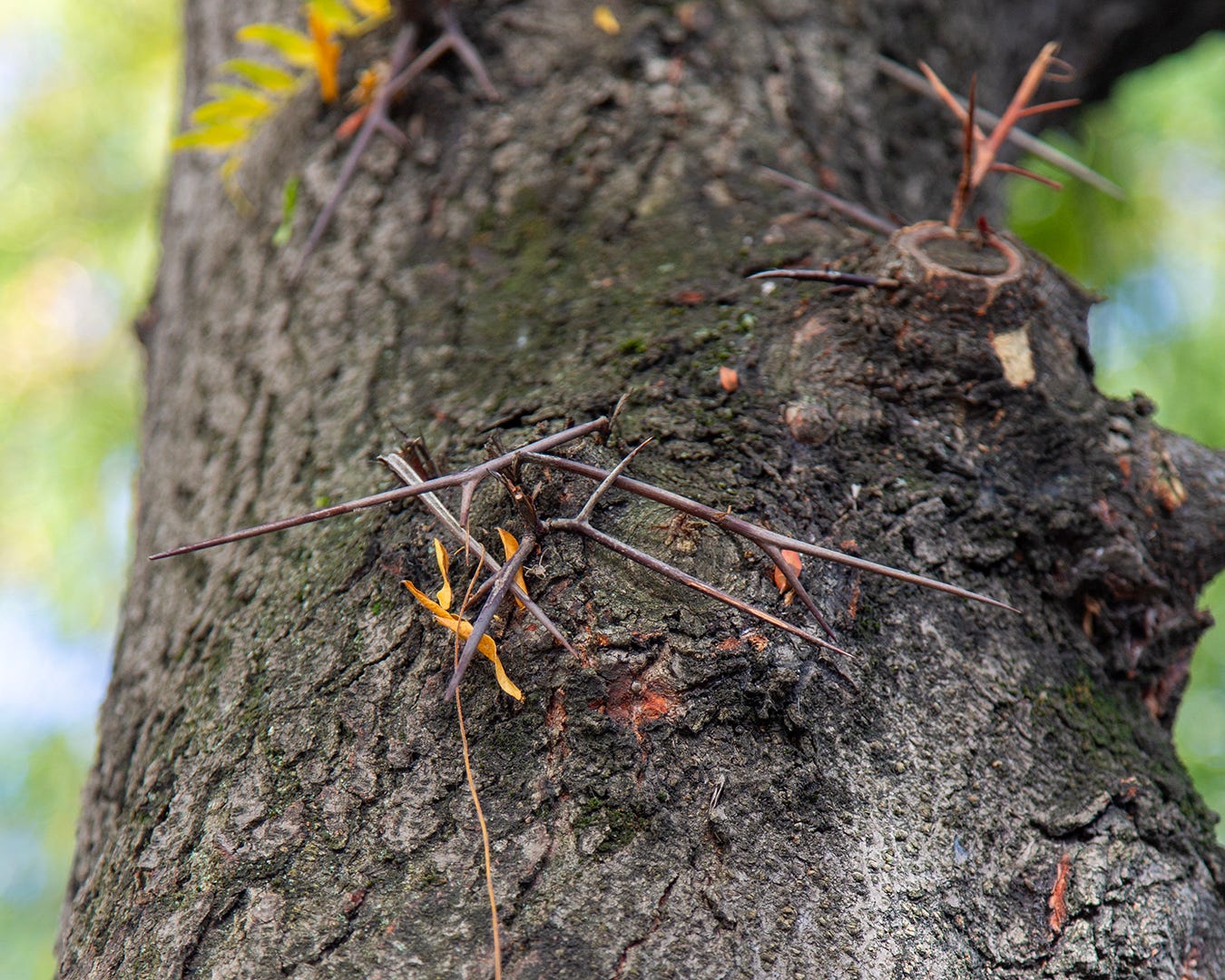North American Honey locusts have been popular with urban foresters for several decades, particularly those of the thornless ‘Inermis’ form. Today’s tree is not a thornless variety however, and being a street tree, it must require regular management to ensure public safety. Those thorns can grow large, and as they mature, they also branch, forming very formidable defences.
As well as thorns, honey locusts have large seed pods that are starting to mature and will turn a deep ox-blood colour, although this only occurs on some trees, many of those planted on streets are infertile. So it is the leaf colour that is most noticeable right now, it is starting to turn a dazzling yellow that will be at its height in the next couple of weeks.
What is it?
Honey locust
Gleditsia triacanthos
Where is it?
Upper Street, London N1 1RG
///stand.swim.hook | 51.541707, -0.103039
See you on Saturday?
I’ll be leading a walk around Dulwich Village looking at street trees, in collaboration with Village Books who will be hosting a book signing afterwards. Click here for more info and to book.
Shout out for Bob Gilbert
Some of you may have come across the work of my pal, Bob Gilbert. He’s the author of Ghost Trees and the Green London Way. He’s giving a free talk this evening for Islington Gardeners about his latest book, The Missing Musk, which is sure to be a treat. Book your spot.








Love the canopy and colour of these but heck they are so vicious!
I keep a respectful distance from these graceful ladies who deeply resent undue familiarities!